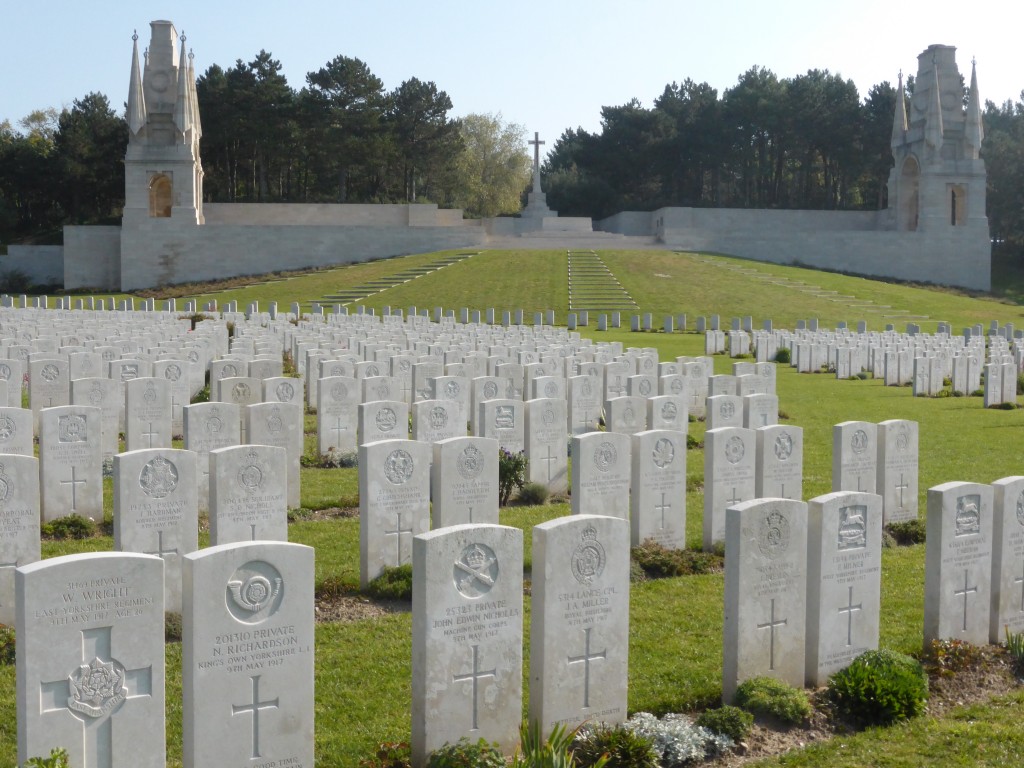Great War Dundee
This is Dundee's story of those that served in the First World War, and of the people left at home
- At the Front
- Dundee’s Own
- Battle of Loos
- Ranks, roles and jobs
- Daily life at the front
- The War at Sea
- HMS Vulcan and the 7th Submarine Flotilla
- ‘Dundee Ladies Drowned.’ U-boats and Surface Raiders
- ‘Every shot was a hit!’ HMS Dundee and the North Sea Blockade
- ‘Engaged submarine with gunfire.’ HMS Perth and the Red Sea Patrol
- Sea Soldiers. HMS Unicorn and the Royal Naval Volunteer Reserve
- North Sea Patrol. Royal Naval Air Station Dundee
- Commemoration. The Roll of Honour and Seamens’ Memorial
- Letters to and from home
- Dundee facts about WW1
- 5 myths of WW1
- Brave Animals
- Cemeteries and memorials worldwide
Cemeteries and memorials worldwide
The soldiers who fought and died in the Great War were from all over the Commonwealth – the United Kingdom, Canada, Australia, New Zealand, South Africa and India. Nearly 900,000 died and it was not possible for their bodies to be repatriated. Local war memorials were often erected in towns and villages to remember the fallen, however it is thanks to one man, Fabian Ware, that the final resting places of the soldiers who died have been recorded. In 1914 Fabian was 45 years old and being too old to fight he worked instead for the Red Cross. The amount of casualties was overwhelming but he was determined to catalogue all the graves he could. His work was recognised and eventually the Commonwealth War Graves Commission (CWGC) was set up.
Cemeteries
In the decade after the war finished, the CWGC was responsible for building over 2400 cemeteries in France and Belgium. Cemeteries were also built across the globe in countries where fighting took place including Italy, Iraq, and Egypt. Graves were initially marked by an appropriate symbol such as a wooden cross or Jewish star, however these were later replaced with a headstone made from Portland stone or marble. The headstones are the same for each soldier and, where possible, includes the regimental badge, rank, name, date of death and age. Families could include their own inscription and there are many touching examples. Where the identity of the soldier is unknown, the headstone is inscribed- A SOLDIER OF THE GREAT WAR -KNOWN UNTO GOD. Row upon row of headstones poignantly expresses the enornmous loss of life. The CWGC is now responsible for cemeteries and memorials in over 150 countries.

Memorials
Many soldiers’ bodies were not found at all so their names are inscribed on a number of large memorials. The most famous of these is the Menin Gate memorial and it can be found in the Belgium town of Ypres. This memorial features the names of 55,000 missing soldiers inscribed over 1200 panels. Every evening at 8pm the Last Post is sounded; this is a tune played on bugles to honour the memory of the fallen soldiers. The ceremony started in 1928 and these days hundreds of visitors gather every night to witness the ceremony. There is a one minute silence and these well known words from Laurence Binyon’s poem,Ode of Rememberance, are recited.
They shall grow not old, as we that are left grow old,
Age shall not weary them, nor the years condemn,
At the going down of the sun and in the morning,
We will remember them.
Picture kindly supplied by Christine Johnston.
